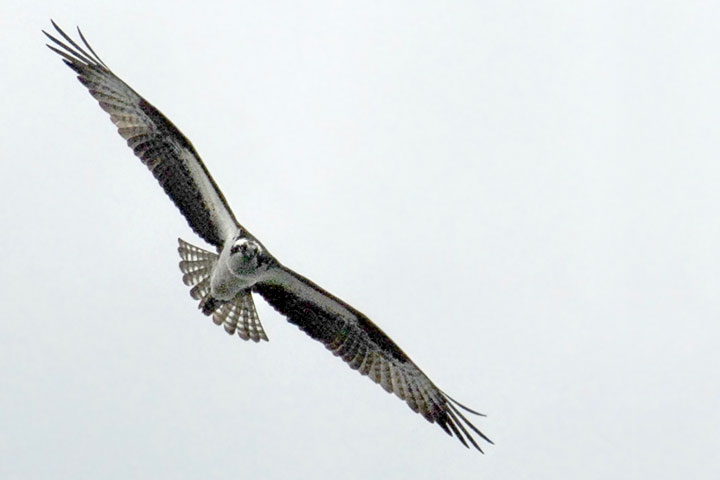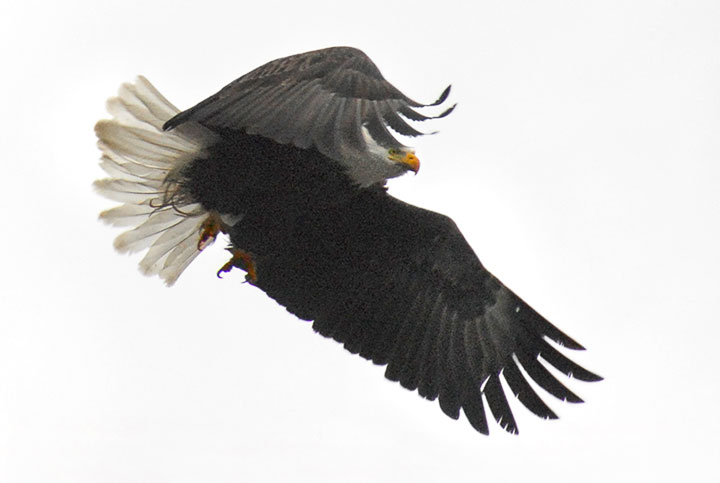Turning
A bird turns by banking—the banking is not a consequence of the turning, it is the cause of it. Lift is perpendicular to the surface (plane) of the wings, so when the bird banks, there is a horizontal component of lift which causes the change in direction. (If instead of banking, the bird’s tail were to be used in the manner of a boat rudder, it would merely cause the bird to sideslip through the air: although the body would turn, the direction of motion would remain the same).
While a bird turning by banking is an easy thing to observe, more subtle is how the bird initiates and ends the banking, and thus the turn. To initiate a bank, the bird must increase the lift on the outer wing (or decrease it on the inner wing). To terminate a bank, the bird increases lift on the inside wing. To do this, there are a number of things it can alter on one wing or the other: angle of attach, camber, surface area, or stroke amplitude. The changes needed to accomplish these things are probably too subtle to be easily seen in the field.
 An Osprey banking and turning. When the bird banks, there is a horizontal component to the lift which changes the flight direction.
An Osprey banking and turning. When the bird banks, there is a horizontal component to the lift which changes the flight direction.
 This Bald Eagle is executing a sharp turn and is clearly using its wings (and tail) asymmetrically. It looks as if the left wing is in a downstroke and the right wing is in an upstroke.
This Bald Eagle is executing a sharp turn and is clearly using its wings (and tail) asymmetrically. It looks as if the left wing is in a downstroke and the right wing is in an upstroke.
![]()